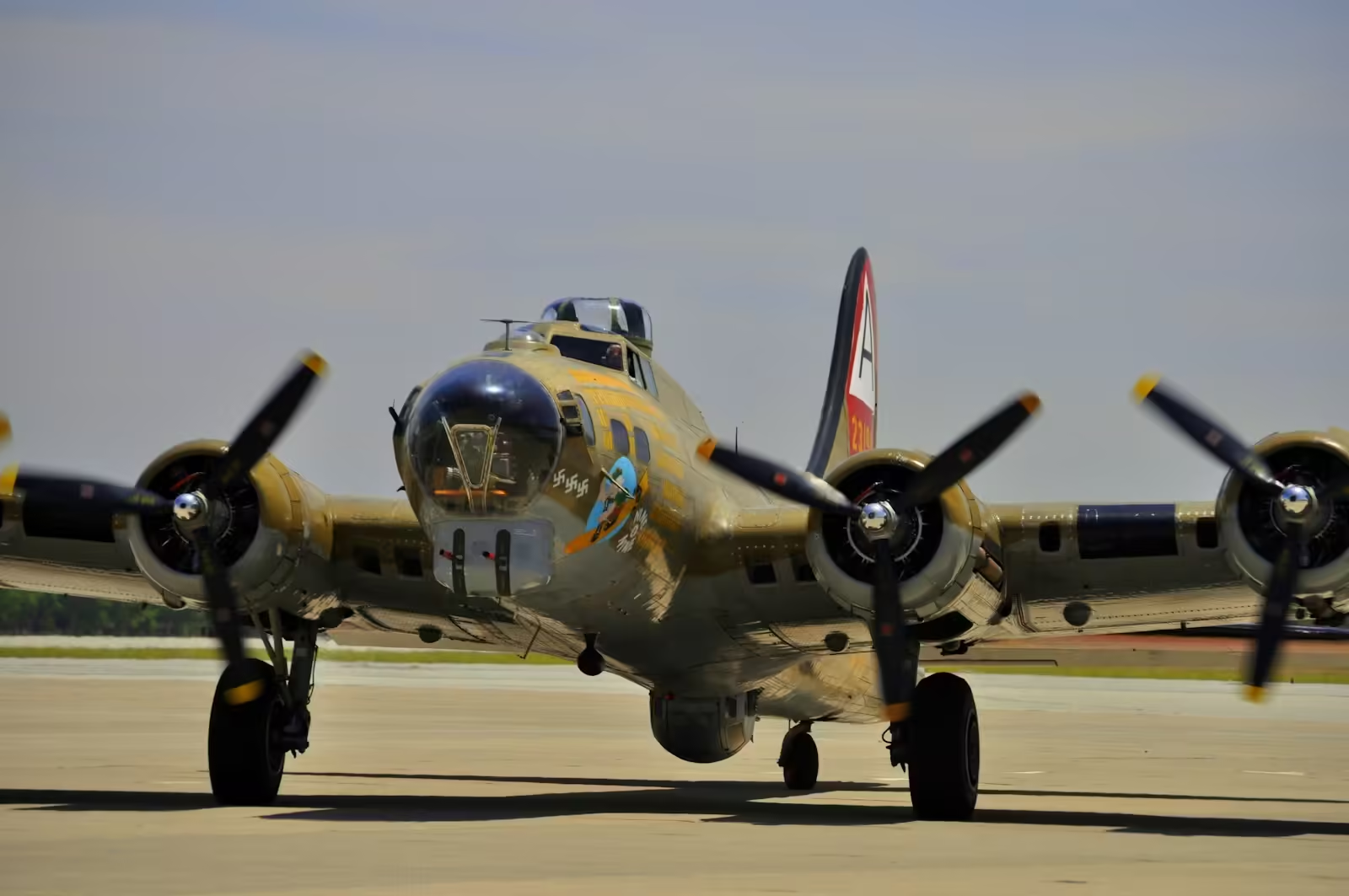
Table of Contents
The Boeing B-17 Flying Fortress was an iconic symbol of American aviation during World War II. It holds a storied history as a legendary bomber, revered for its robust design and strategic role in the war effort. Today, the B-17 remains a symbol of strength and resilience.
The B-17 bomber, known to many as the “Flying Fortress”, was an important strategic bomber used by the United States during World War II. It was a Boeing creation noted for its robustness, with a strong defensive armament capable of mounting 13 machine guns.
Due to its robust construction, the B-17 was able to withstand heavy damage and still complete missions, making it a famous aircraft. It was crucial for strategic bombing raids on Europe during the day targeting infrastructure, military stations and industrial areas. It was an important tool in the Allied war effort due to its ability to drop bombs accurately and fly high.
A force to be reckoned with B-17
1934 In response to a request by the Army Air Corps for a four-engine bomber, the Boeing Aircraft Company designs the B-17, a high-flying strategic bomber. Since two engines were more typical at the time, the development of this heavy bomber revolutionized military aviation.
With a wingspan of 103 ft 9 in (31.62 m) and a length of 74 ft 4 in (22.66 m), the Flying Fortress is huge. With four turbo-supercharged radial engines powering each three-blade propeller, its appearance is striking. Capable of carrying 17,196 pounds (7,800 kg) of bombs internally and externally, the aircraft highlighted its role in strategic precision bombing operations.
Thanks to its powerful engines, the B-17 could reach altitudes of 25,000 to 35,000 feet (7,500 to 10,500 m), demonstrating its strategic importance. This gave pilots the ability to hit targets with precision and power while dodging enemy defenses, thanks to the Norden bombsight’s high degree of accuracy in bomb unloading.
Attack or be attacked
The technical characteristics of the B-17 highlight its status as a technological marvel of its time. With a top speed of 287 miles per hour (293 km/h) and a range of more than 2,000 miles (3,219 km) with a 6,000 pound (2,700 kg) bomb load, the B-17 could penetrate and strike deep into enemy territory. Important objectives precisely.
With multiple machine gun emplacements well positioned to counter enemy fighters, the aircraft’s defensive capabilities were equally formidable. With up to a 13.50-caliber machine gun as part of its defensive armament, it could effectively engage opposing fighters with a veritable wall of artillery fire.
Follow Simple Flying for the latest updates on military aviation.
As the mainstay of the US Army Air Forces’ daylight bombing campaign, the B-17 flew dangerous missions deep into enemy territory. Flying Fortress squadrons operated in close defensive formations for mutual protection, usually consisting of nine or twelve aircraft.
Throughout its service life, the B-17 received many improvements and modifications that resulted in several versions for specific purposes. The B-17G, a notable variation that saw service in the summer of 1943, added a “chin” turret for more frontal firepower, improving the aircraft’s ability to defend against direct hits.
A lasting legacy
Before the B-17 was replaced by the larger and more powerful B-29 Superfortress, Boeing produced more than 12,730 aircraft in collaboration with Douglas, Lockheed and Vega. A small fleet of modified flying turrets were used for search and rescue operations after the war.
Six of these are still in use today, but the memory of this wartime marvel lives on with carefully preserved examples displayed in museums and air shows, inspiring new generations to recognize its value. Beyond its historical significance, the B-17 Flying Fortress is a symbol of the bravery, tenacity, and ingenuity that helped define the course of World War II.
READ | Russia’s supersonic bomber, the XB-70 Valkyrie, was rendered obsolete before its flight.


1 thought on “A Complete Guide to the B-17 Bomber Known as the “Flying Fortress”.”